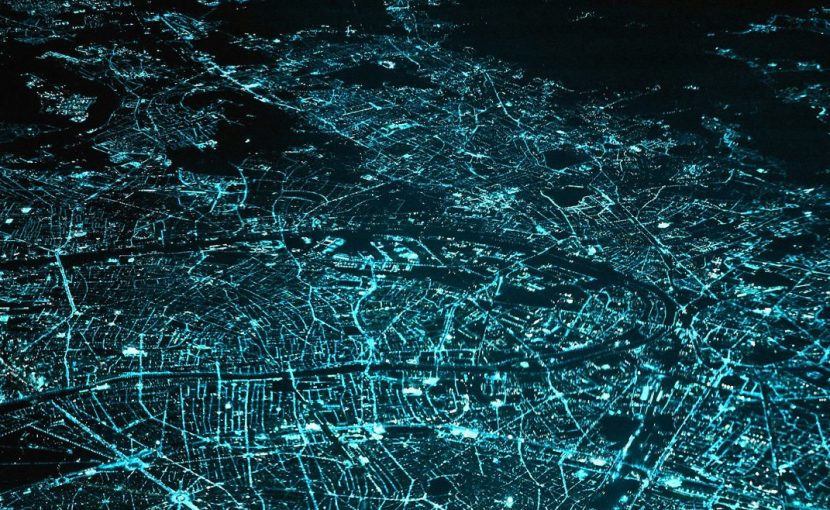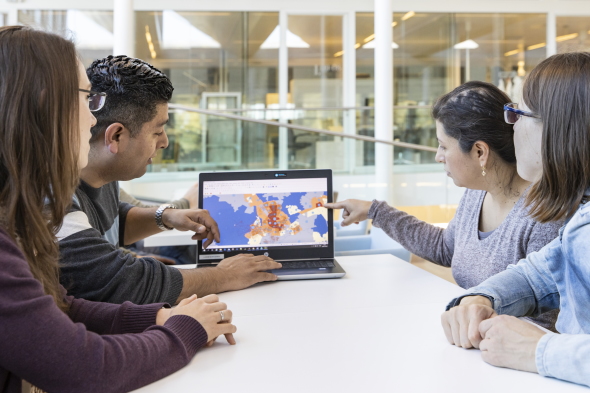
Hydroinformatics
A system philosophy founded on digital insights
Hydroinformatics is the application of information technology in its broadest sense on water-cycle related issues, combining technological, sociological and environmental perspectives. Hydroinformatics is about having the required data and the necessary tools to understand our water environment, design and operate resilient water infrastructure, engage stakeholders throughout the water value chain, and help them reach decisions that improve water systems and services for society.
It provides the means to turn data into knowledge and knowledge into informed decisions. Combining information technology and water research, KWR uses hydroinformatics to support decision-making for more resilient urban water management. Our work integrates electronic hardware, software and human expertise to improve the design, situational awareness, control and performance of water systems resulting in Smart(er) Water Management (SWM).
Hydroinformatics facilitates integration
Using hydroinformatics, fragmented knowledge and data are brought together and translated into integrated water models and tools, giving rise to more water-wise ideas, plans and concepts. Hydroinformatics both advocates and supports a more integrated approach to urban water management. KWR, as an important agent in the introduction of new hydroinformatics concepts and technologies in the water sector, brings to the table its multidisciplinary and solution-oriented approach, bridging science to practice.
KWH Hydroinformatics mission
Using hydroinformatics to support operational, tactical and strategic decision-making, KWR helps the water sector to increase its resilience, efficiency and sustainability. This is described in more detail in KWR’s new Hydroinformatics vision. KWH’s main hydroinformatics research areas are summarised under the following four activity lines:
- Tapping into the new data landscape:
Examples of research under this activity include: data standardization, data quality control and validation, improving data access (including data sharing and open data), big data analytics (including statistical summaries and novel visualization), gaining new insights from of large, heterogeneous databases by knowledge discovery and datamining, developments in AI such asundefined deep learningA technique for mechine learning with computers.as well as customer/citizen interaction and
undefined data crowd-sourcing.Creating data sets using mostly citizens.
- Getting more out of data and models:
Examples of research under this activity include: data assimilation (field data coupled with models and/or field data from different sources and with different uncertainties are used in combination), advanced optimisation (including smart model calibration under uncertainty and noise); model development and integration, with databases and other models, as well as with real-time data (including IoT sensors) to form ‘digital twins’ of water utilities. - Planning for more resilient (whole) systems and services:
Examples of research under this activity include: model integration and higher abstraction level modelling/model coupling, whole system strategic models, forecasting and scenario planning tools, cyber-physical water system security, modelling of cascading effects between water systems and other infrastructures. - Training, Engaging and Communicating
Examples of research under this activity include: tools/methods like Serious Games, Augmented Reality, Virtual Reality, Immersive scenario planning (including crisis management training), but also more general questions like communication of results in terms of probabilities rather than certainties and decision-making in this context.
Decision-making for resilience
Hydroinformatics, is a forward-looking discipline at the interface between water science, technology and society. In KWR we leverage its power to offer water utilities and Water Authorities access to better knowledge, which directly supports decision-making for a more resilient water sector.

Mario Castro-Gama presents to colleagues from hydroinformatics Ina Vertommen, Claudia Agudelo-Vera and Els van der Roest. Data from different sources such as CBS, KNMI, mobile phone and water consumption can be used to drive a Digital Twin. The drinking water network model of Eindhoven (Brabant Water) is constantly updated with this data.